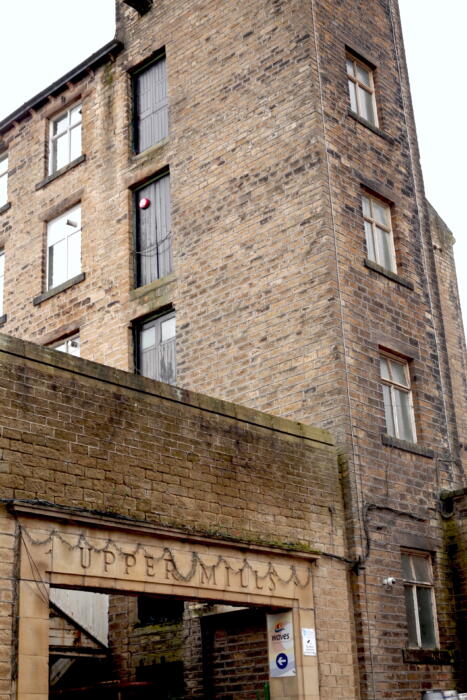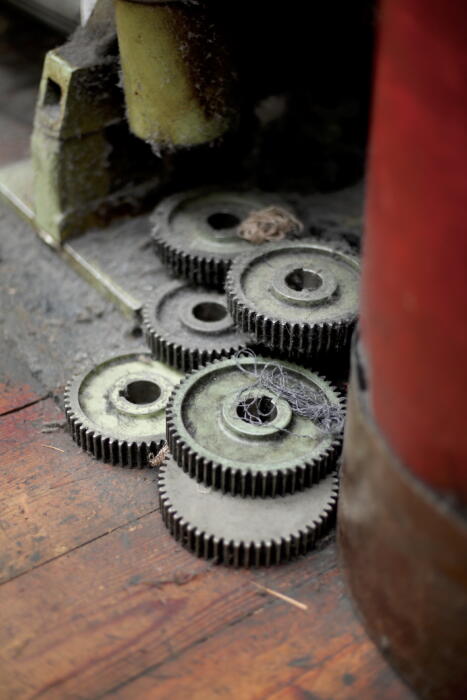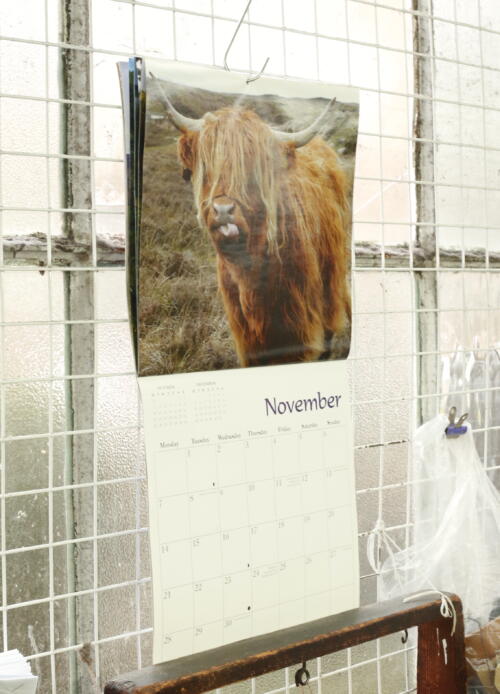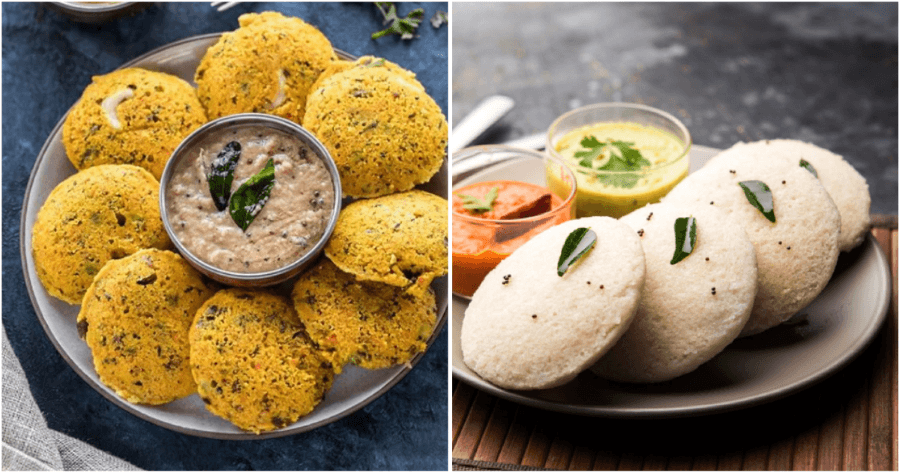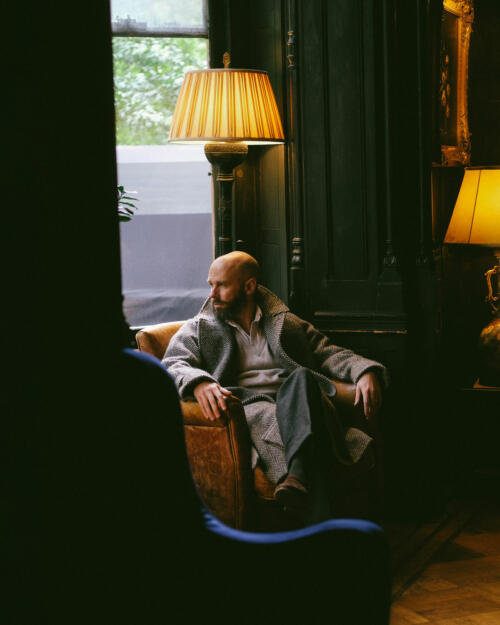
When we develop a new coat with Private White VC, Lucas and I generally travel up to Manchester to them in person, to talk through the idea and dig into the archive.
At the end of last year, when we went up to discuss our ‘English Tweed’ project, it also turned into a road trip, with five of us shuttling along the M62 from Salford to Slaithwaite to see Marling & Evans. I’d never been to the mill, and Mike Stoll at PWVC thought some M&E cloth might be a good fit for the coat.
It ended up feeling something like destiny.
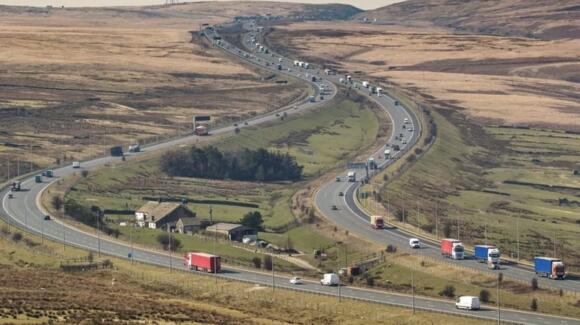
The dynamics in a car are interesting. Suddenly the relationships between people change, with one person in charge and others feeling like kids in the back. It’s perfectly acceptable to stare out of the window and say nothing – but people do also share completely random thoughts. It’s cosy and intimate, yet no one is looking at each other.
My abiding memory of that journey was seeing the farm that famously sits between two halves of the M62, Stott Hall Farm (above). The story is that the owner refused to move out when the motorway was developed, and so it’s plonked incongruously between the north and south lanes.
I think at this point someone else in the car pointed out that this isn’t quite right. That actually the land couldn’t be used for the motorway because it was too steep, so the farmer is not the reason for the bifurcated traffic. Still, he could have moved out and decided to remain there, tending his sheep.
Weird conversation. Not something we’d ever talk about if we weren’t all sitting in a car, staring out at the countryside.
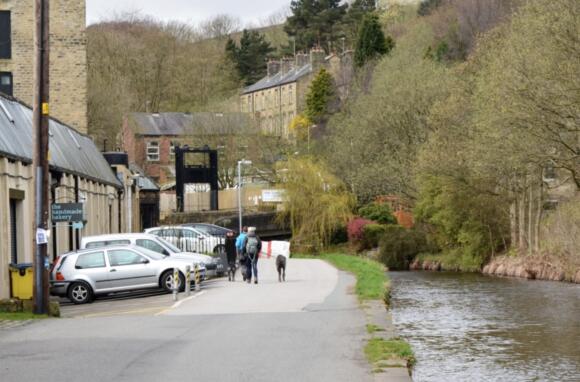
When we arrived at Marling & Evans it was a pleasant sight. The local industrial area is being redeveloped (above), and M&E’s neighbours are The Handmade Bakery and Hillside Harmonies record shop. The hills slope down steeply all around, and the River Colne (rather like the M62 around Stott Hall) flows thoughtfully around either side of the complex.
Mark Garrett of Marling & Evans was outside to greet us and conducted a quick tour of the mill, before we sat down with cups of tea to talk about our reference coat – a vintage piece from 1980 I’d picked up a few weeks earlier.
Mark and Mike began turning the coat over, talking about the period. Both were working back then, both in the same industries, and they realised they might have made the coat together – Mark the cloth and Mike the coat (shown below, right and left respectively).
In fact the more they looked at the details, the more likely it seemed. Mike has been making British outerwear for decades in what is now the Private White factory – hence the extensive archive. Our task shifted from trying to create something new to remembering how the original had been made.
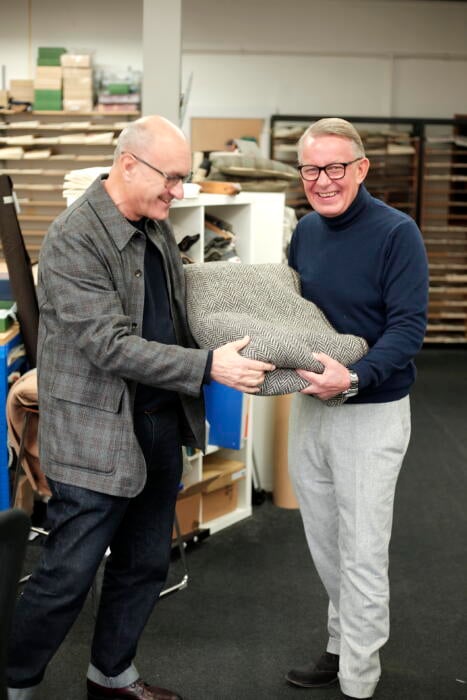
The cloth Mike had had in mind was Marling & Evans undyed wool, which is made from local sheep and seemed close to the spirit of the original.
But we would certainly want to develop our own version – which is an aspect of PS products I probably don’t emphasise enough.
The material used in the English Tweed coat is not one you can buy anywhere. Just like the Donegal coat, the weight, density and colour combination are all specific choices of ours. The fact some M&E undyed wool is available by the cut length has caused confusion with some readers, asking which swatch it is. But nothing else is the same.
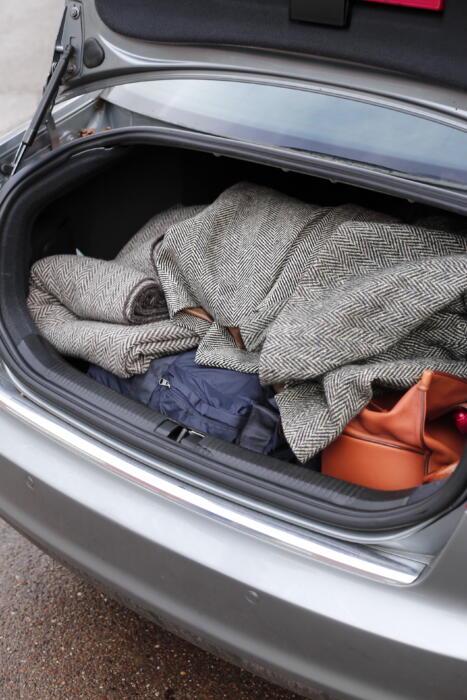
The journey to develop it started that day in Slaithwaite, when Mark went to see if he had a spare length of the undyed quality. He did, so we lugged that big roll out to the car and stuck it in the boot (above) to take back to PWVC.
In the next few weeks we went through three other permutations, though, before arriving at the tweed we wanted. It had to be heavy enough to be a real winter weight, but also soft enough to give that reassuring sponginess. The colours also changed, with grey and black being replaced with a more subtle grey/cream mix in one direction, and dark brown in the other.
As I said in the launch article, developing your own products really makes you realise how much these little decisions contribute to good design, and how much time it takes.
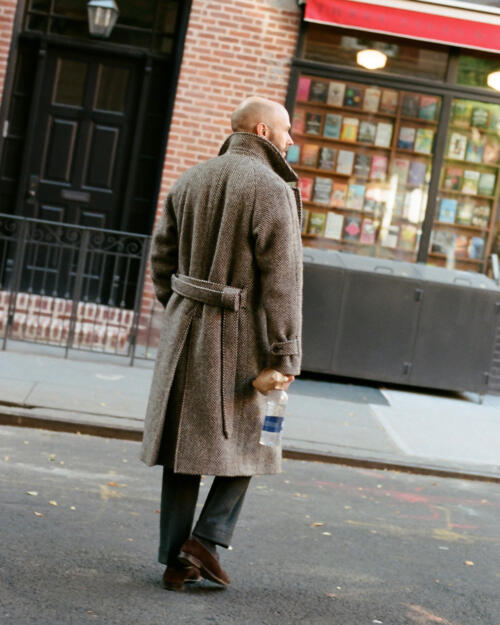
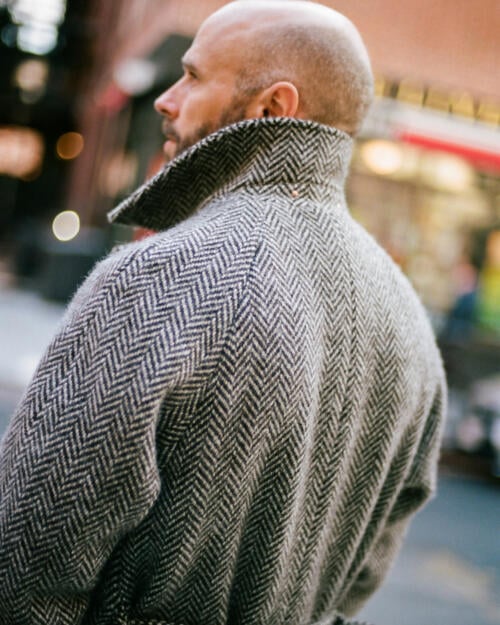
I’ve worn the coat on my travels this winter – to New York back in October, to Seoul a fortnight ago – and it’s proved practical, warm and reassuring.
We just missed the snow in Seoul, but there was still an icy wind now and again, and the coat was nice buttoned up to the chin. In New York the weather was warmer than normal, but in the evening there were cold winds that fly down NYC’s long, straight streets.
The picture at the top of this article was taken by Rubato in New York, for an upcoming journal piece. It shows how I wore the coat most days: open, with a knit and a pair of flannels, not too warm but ready to button up against the cold.
In Seoul it had to be rather smarter, as I was seeing tailors every day and having fittings. But it admirably there too, never looking too casual and holding a hat and notebook in the big hip pockets.
I love bespoke overcoats and they will probably always be my favourite, but it’s great to have something soft and easy that can also cross over between smart and casual.
Thank you to Mark and Mike for sharing all their history with us, and to Rubato for the use of the photo. That journal piece, with more of Oliver’s lovely photography, will be on their site when it’s ready
The English Tweed coat is available here. Some snaps below of the M&E mill.
